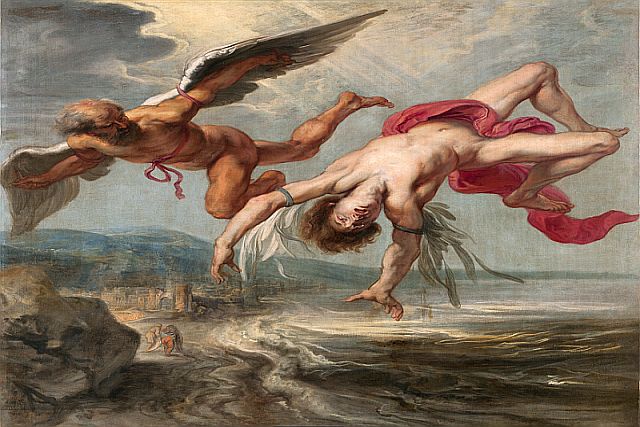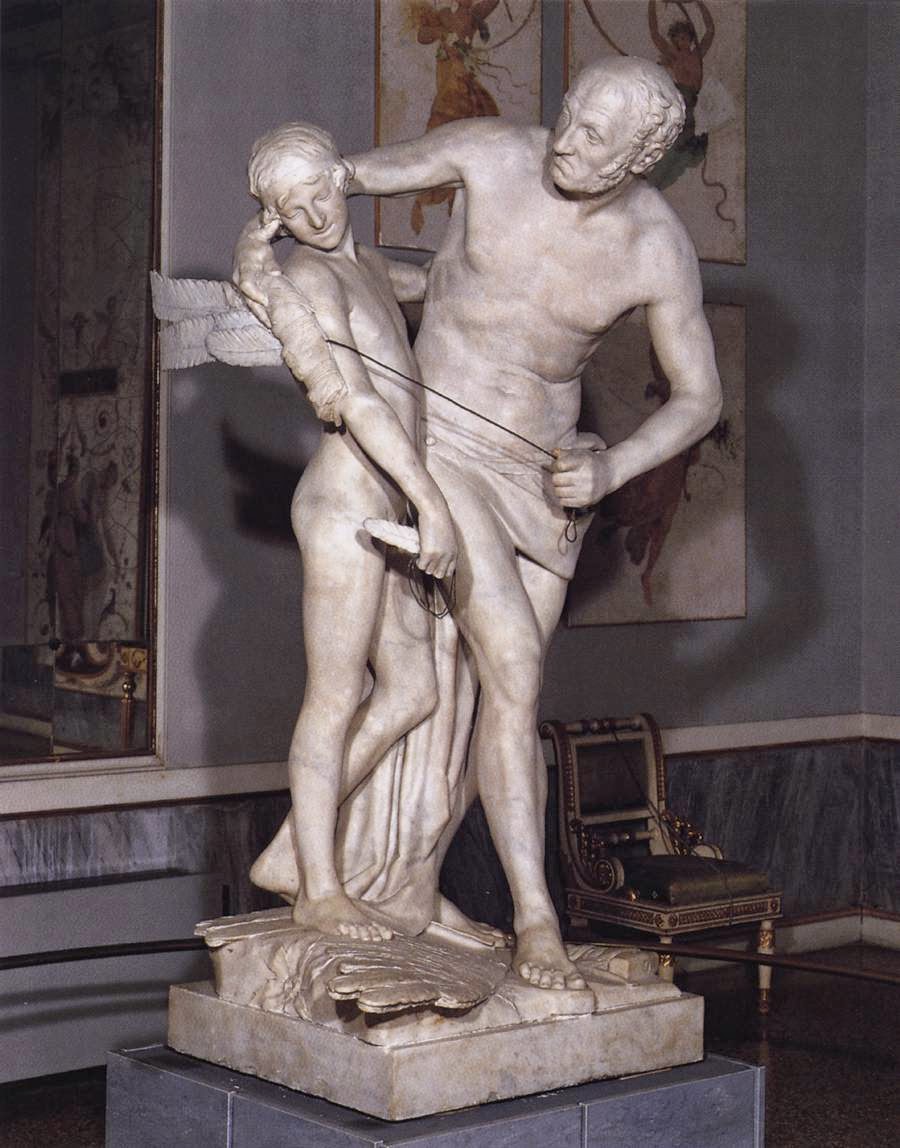Daedalus and Icarus
The tragic flight towards the sun and the fall of the man who sought to fly high.

Originally from Athens, Daedalus became famous as an excellent inventor. Although you would expect the gods to reward such a gifted person, his life was never happy or peaceful. He could never resist a challenge, so his disaster came from his attempt to help two desperate women, Pasiphae and Ariadne. This caused the wrath of the mighty King Minos.
The fatal flaw of Daedalus was his overwhelming pride in his work and personal reputation. He believed he could find a solution to any problem. For many years his self-confidence has been fair as his inventions have been the subject of admiration by gods and humans. He designed natural figures for the statues, while the posture of the bodies was with hands stuck to the body. Such innovations granted him great success, but he always felt envy, especially against his nephew, Perdix.
The mother of Perdix had sent him to learn the art of the engineering by Daedalus, who was her brother. The young man showed great skill and learned with ease. One day while walking on the seashore, Perdix found the backbone of a fish and copied it by creating an iron in this form. He invented the saw. According to another legend he created a calipers by joining two rods of metal.
Daedalus should be proud of his student, however because he felt threatened, he envied him. In an absurd attempt to get rid of his competitor, he pushed him from the top of a temple of goddess Athena. Athena, who was a protector of ingenuity and intelligence, when she saw Perdix fall, he hurried to transform him into a bird named after him(perdika is greek for partridge). Partridges build their nests on low fences and do not fly high.

After the murder of Perdix, Daedalus fled to Crete, where King Minos received him. The problems started when Daedalus agreed to help Minos wife, Pasiphae. Minos had a bull to sacrifice to god Poseidon, but the king did not execute the sacrifice because he believed that the bull was too handsome to sacrifice.
For retaliation Poseidon made Pasiphae fall in love with the animal. She begged Daedalus to help her, which he did not refuse. So he built a fake cow in which Pasiphae hid. The construction was left to the bull. Minos' punishment came nine months later when Pasiphae gave birth to the terrible Minotaur, half a man and half a bull.
After the birth of the Minotaur, Minos was outraged by the act of revenge of Poseidon, the behavior of Pasiphae, and the role that Daedalus played in the conception of the Minotaur. The king demanded that Daedalus devised a way to imprison a monster. For this reason Daedalus created the Labyrinth. This construction consisted of innumerable corridors and passages that were endlessly perplexed. According to myth, the Labyrinth was built under the royal palace of Knossos.

Minos demanded an annual tax from Athens (perhaps because Daedalus was originated from there) for 14 young Athenians (7 youngs men and 7 virgins). These young men were sent to Crete, they were imprisoned in the Labyrinth and were devoured by the Minotaur. One year the prince of Athens Theseus volunteered to be one of the victims.
The daughter of Minos Ariadne fell in love with Theseus and begged Daidalos to help her save Theseus from the Minotaur. Daedalus gave her a string of thread and told her to tie one end at the entrance of the Labyrinth so that Theseus would unwind the skein as it would go deeper into the corridors. Ariadne gave the thread to Theseus with the instructions of Daedalus.
He found the Minotaur sleeping and killed him with his hands, while some say he killed him with a sword given to him by Ariadne. Then he found the exit from the Labyrinth wrapping the Ariadne’s thread

For the help he offered to Ariadne, Minos imprisoned Daedalus and his son Icarus. Some say he was imprisoned in the Labyrinth, others that he was holding him in a tower. The escape was impossible from land and sea, so Daedalus made two pairs of large wings, in which he glued feathers of waxed birds. The plan that he conceived was to use them to fly him and his son away.
Shortly before the flying trip to freedom began, Daedalus warned Icarus not to fly very close to the sun or too low in the sea's humidity. But Icarus did not listen to him. Father and son flew away from Crete, but Icarus was intoxicated by the flight and the power that the wings gave him, so he started flying higher and higher. His father cried out trying to warn him, but the boy did not pay attention. Icarus approached so much in the sun that the wax from the wings melted. The wings were dissolved and he was killed by falling into the sea.

In a blackened heart, Daedalus buried Icarus' body on an island and fled to Sicily, where the king hosted him. In Sicily, Daedalus built a temple in Apollo and offered his wings to the god of light. Minos, outraged by betrayal, and thirsty for vengeance, did not know where Daedalus was, but he knew that he could trick him into revealing himself if he was addressing his vanity. So he gave a great prize to a contest for anyone who managed to get a thread through a complicated helical shell.
Daedalus, as a representative of the Sicilian king, solved the puzzle with a genius trick: He tied a thread to an ant and put it on one end of the messy shell. When the ant came out from the other end of the shell, it was obvious that Daedalus had managed to pass the thread through the shell. When Minos heard about this feat, he was certain that only one man could give such a clever solution and that would be Daedalus. So he campaigned against Sicily to capture Daedalus. The Sicilian king refused to hand over his friend, so a fierce battle followed in which Minos was killed.
After the death of Minos, Daedalus is not mentioned anywhere in Greek mythology. Perhaps the death of Icarus compensated the gods for the murder of Perdix, and so Daedalus did not again bother the gods. Her legacy, however, remains through the creation of labyrinths even today as a game that sharpens the minds of the players.
